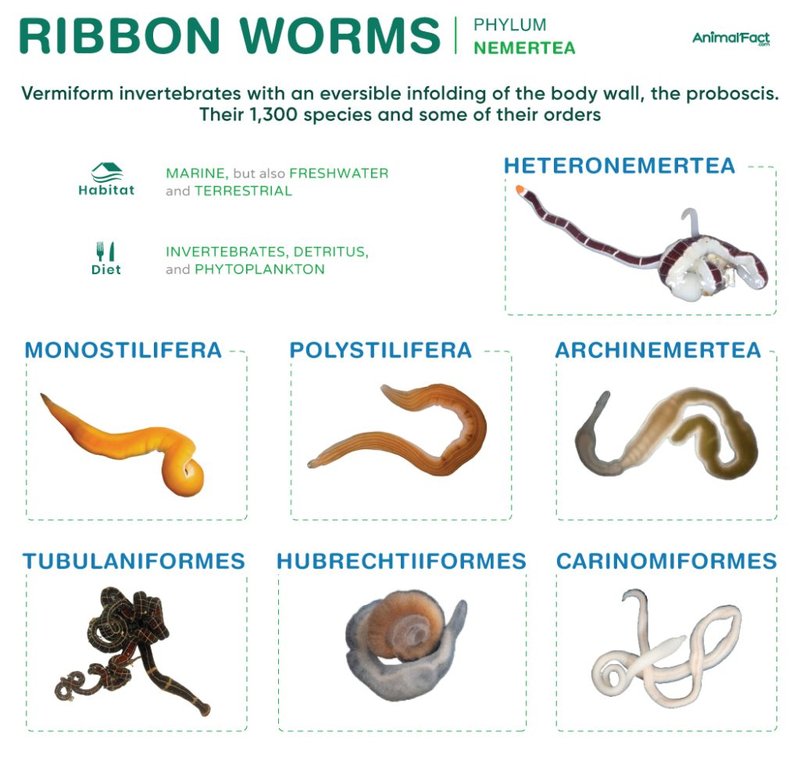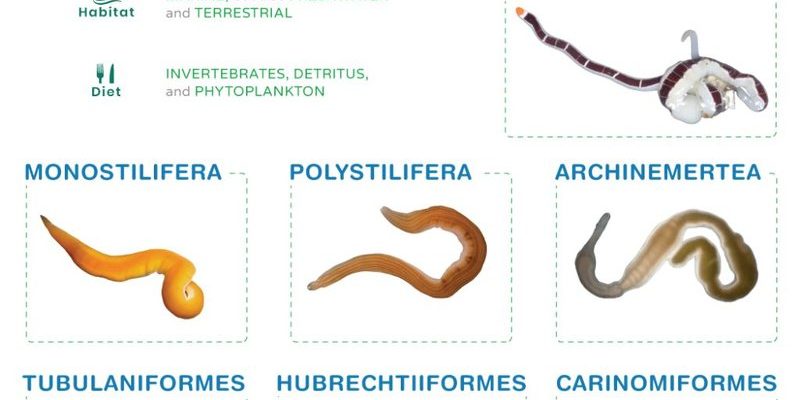
Now, you might be wondering what sets ribbon worms apart from other types of worms. For starters, they have a unique feeding method that involves a special structure called a proboscis. Picture a retractable straw that helps them snag their prey. If you’re curious about the biology, habitat, and life cycle of these intriguing organisms, stick around. Let’s dive deeper into the world of ribbon worms and discover what makes them so special!
What Are Ribbon Worms?
Ribbon worms belong to the phylum Nemertea, which includes over a thousand different species. These creatures are mostly marine, residing in ocean habitats, but some can also be found in freshwater and on land. What makes ribbon worms stand out is their fascinating body structure. They can grow anywhere from a few centimeters to over 30 meters in length! Yes, that’s right—the longest ribbon worm can be as long as a blue whale!
Typically, ribbon worms have a flattened body, which allows them to move through their environment with ease. They have a simple but efficient body plan, consisting of a head, a trunk, and usually a tail. Many species have brilliantly colored bodies—think shades of bright red, yellow, or purple. This vibrant coloration not only makes them visually striking but may also serve as a warning to predators about their potential toxicity.
The Anatomy of Ribbon Worms
When we talk about ribbon worms, we can’t ignore their unique anatomy. These creatures have a fascinating structure called the proboscis. You can think of it as a long, stretchy appendage, almost like a worm’s own Swiss Army knife. The proboscis is housed within a cavity and can be extended or retracted to catch prey.
Here’s how it works: when a ribbon worm spots a tasty meal—like a small fish or another worm—it quickly shoots out its proboscis to ensnare its target. This method is incredibly effective, allowing them to capture prey that might be quicker or more agile than they are. Once the prey is caught, enzymes in the worm’s saliva help digest the food right there, making it easier to consume.
An interesting fact? Some ribbon worms produce toxic substances. This not only helps them defend against predators but also immobilizes their prey quickly. So, there’s a lot more going on in that slimy body than meets the eye!
Habitat and Distribution
Ribbon worms are quite the cosmopolitan group, thriving in various environments. Most species prefer marine habitats, often found in sandy or muddy substrates along coastlines. They can be spotted in waters ranging from shallow tidal zones to deeper ocean floors. Some even live among rocks and seaweed.
You might also find some ribbon worms in freshwater environments, but that’s less common. These adaptable creatures have also been known to thrive in moist terrestrial habitats, like forest floors or wetlands. So, if you’re ever on a beach and see a long, colorful worm, it just might be a ribbon worm making its way across the sand!
Feeding Habits and Diet
So, what do ribbon worms eat? The answer: a variety of small marine animals. Their diet usually consists of small fish, crustaceans, and even other worms. With that impressive proboscis ready for action, they can quickly snatch up unsuspecting prey.
You might be wondering how these creatures find their food. Ribbon worms are primarily benthic feeders, meaning they explore the ocean floor for their next meal. Using their keen sense of touch, they navigate through their environment, often lurking under rocks or in the sand. Once they detect movement, it’s showtime! With rapid precision, they extend their proboscis and capture their meal. After that, it’s a feast!
Interestingly, some species of ribbon worms can also absorb nutrients from the water around them. This allows them to supplement their diet and thrive in environments where food might be scarce. It’s like they have a backup plan for when the going gets tough!
Reproduction and Life Cycle
You might be curious about how ribbon worms reproduce. They have both sexual and asexual reproduction methods, which is quite remarkable. In many species, individuals can reproduce sexually, releasing eggs and sperm into the water where fertilization occurs.
But here’s where it gets really interesting. Some ribbon worms can also reproduce asexually through a process called fragmentation. This means that if the worm gets cut in half, each piece can grow into a new worm! It’s like a biological magic trick, ensuring that even if they face dangers in their environment, they have ways to survive and multiply.
After fertilization, the eggs develop into larvae, which eventually settle to the ocean floor and grow into juvenile worms. This life cycle can take several weeks to months, depending on environmental conditions. Once they reach maturity, they’re ready to make their mark in the marine world—literally!
Importance in the Ecosystem
Ribbon worms play a crucial role in their ecosystems. As predators, they help control the populations of other marine organisms, maintaining a balanced food web. By consuming smaller creatures, they prevent overpopulation, which can lead to depletion of resources in their environment.
Moreover, ribbon worms themselves serve as prey for larger animals like fish and birds. Their vibrant colors and toxic properties also provide a warning signal to potential predators, which is a fascinating aspect of their evolutionary adaptations.
You might not think about ribbon worms when considering ocean health, but they’re a vital part of marine ecosystems. Protecting their habitats contributes to the overall well-being of the ocean and its diverse inhabitants.
There’s so much more to ribbon worms than meets the eye! From their unique anatomy and fascinating feeding techniques to their important ecological roles, these creatures are truly remarkable. They remind us of the incredible diversity of life in our oceans and the many mysteries still waiting to be uncovered.
If you ever find yourself by the ocean, take a moment to appreciate all the life beneath the waves. You might just spot a ribbon worm making its way across the sand, reminding you that there’s beauty in nature’s oddities. So the next time you think of worms, remember the ribbon worms and all their wonders!

